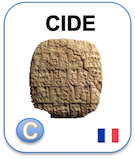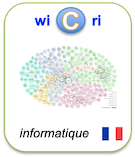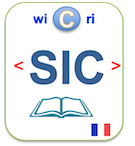Rationale and study design of the Japan environment and children’s study (JECS)
Identifieur interne : 000106 ( Pmc/Corpus ); précédent : 000105; suivant : 000107Rationale and study design of the Japan environment and children’s study (JECS)
Auteurs : Toshihiro Kawamoto ; Hiroshi Nitta ; Katsuyuki Murata ; Eisaku Toda ; Naoya Tsukamoto ; Manabu Hasegawa ; Zentaro Yamagata ; Fujio Kayama ; Reiko Kishi ; Yukihiro Ohya ; Hirohisa Saito ; Haruhiko Sago ; Makiko Okuyama ; Tsutomu Ogata ; Susumu Yokoya ; Yuji Koresawa ; Yasuyuki Shibata ; Shoji Nakayama ; Takehiro Michikawa ; Ayano Takeuchi ; Hiroshi SatohSource :
- BMC Public Health [ 1471-2458 ] ; 2014.
Abstract
There is global concern over significant threats from a wide variety of environmental hazards to which children face. Large-scale and long-term birth cohort studies are needed for better environmental management based on sound science. The primary objective of the Japan Environment and Children’s Study (JECS), a nation-wide birth cohort study that started its recruitment in January 2011, is to elucidate environmental factors that affect children’s health and development.
Approximately 100,000 expecting mothers who live in designated study areas will be recruited over a 3-year period from January 2011. Participating children will be followed until they reach 13 years of age. Exposure to environmental factors will be assessed by chemical analyses of bio-specimens (blood, cord blood, urine, breast milk, and hair), household environment measurements, and computational simulations using monitoring data (e.g. ambient air quality monitoring) as well as questionnaires. JECS’ priority outcomes include reproduction/pregnancy complications, congenital anomalies, neuropsychiatric disorders, immune system disorders, and metabolic/endocrine system disorders. Genetic factors, socioeconomic status, and lifestyle factors will also be examined as covariates and potential confounders. To maximize representativeness, we adopted provider-mediated community-based recruitment.
Through JECS, chemical substances to which children are exposed during the fetal stage or early childhood will be identified. The JECS results will be translated to better risk assessment and management to provide healthy environment for next generations.
Url:
DOI: 10.1186/1471-2458-14-25
PubMed: 24410977
PubMed Central: 3893509
Links to Exploration step
PMC:3893509***** Acces problem to record *****\Le document en format XML
Pour manipuler ce document sous Unix (Dilib)
EXPLOR_STEP=$WICRI_ROOT/Ticri/CIDE/explor/OcrV1/Data/Pmc/Corpus
HfdSelect -h $EXPLOR_STEP/biblio.hfd -nk 000106 | SxmlIndent | more
Ou
HfdSelect -h $EXPLOR_AREA/Data/Pmc/Corpus/biblio.hfd -nk 000106 | SxmlIndent | more
Pour mettre un lien sur cette page dans le réseau Wicri
{{Explor lien
|wiki= Ticri/CIDE
|area= OcrV1
|flux= Pmc
|étape= Corpus
|type= RBID
|clé= PMC:3893509
|texte= Rationale and study design of the Japan environment and children’s study (JECS)
}}
Pour générer des pages wiki
HfdIndexSelect -h $EXPLOR_AREA/Data/Pmc/Corpus/RBID.i -Sk "pubmed:24410977" \
| HfdSelect -Kh $EXPLOR_AREA/Data/Pmc/Corpus/biblio.hfd \
| NlmPubMed2Wicri -a OcrV1
|
| This area was generated with Dilib version V0.6.32. | |


